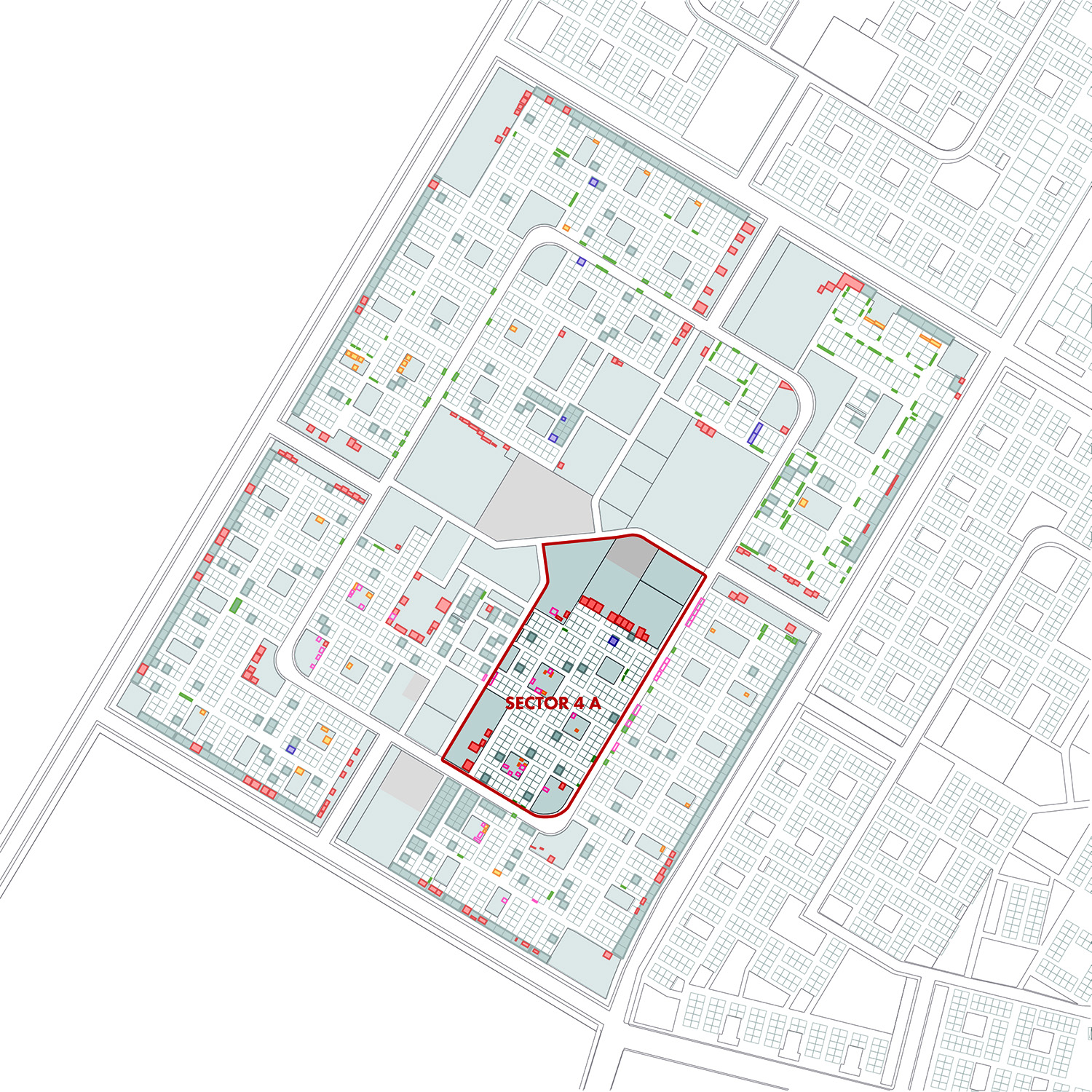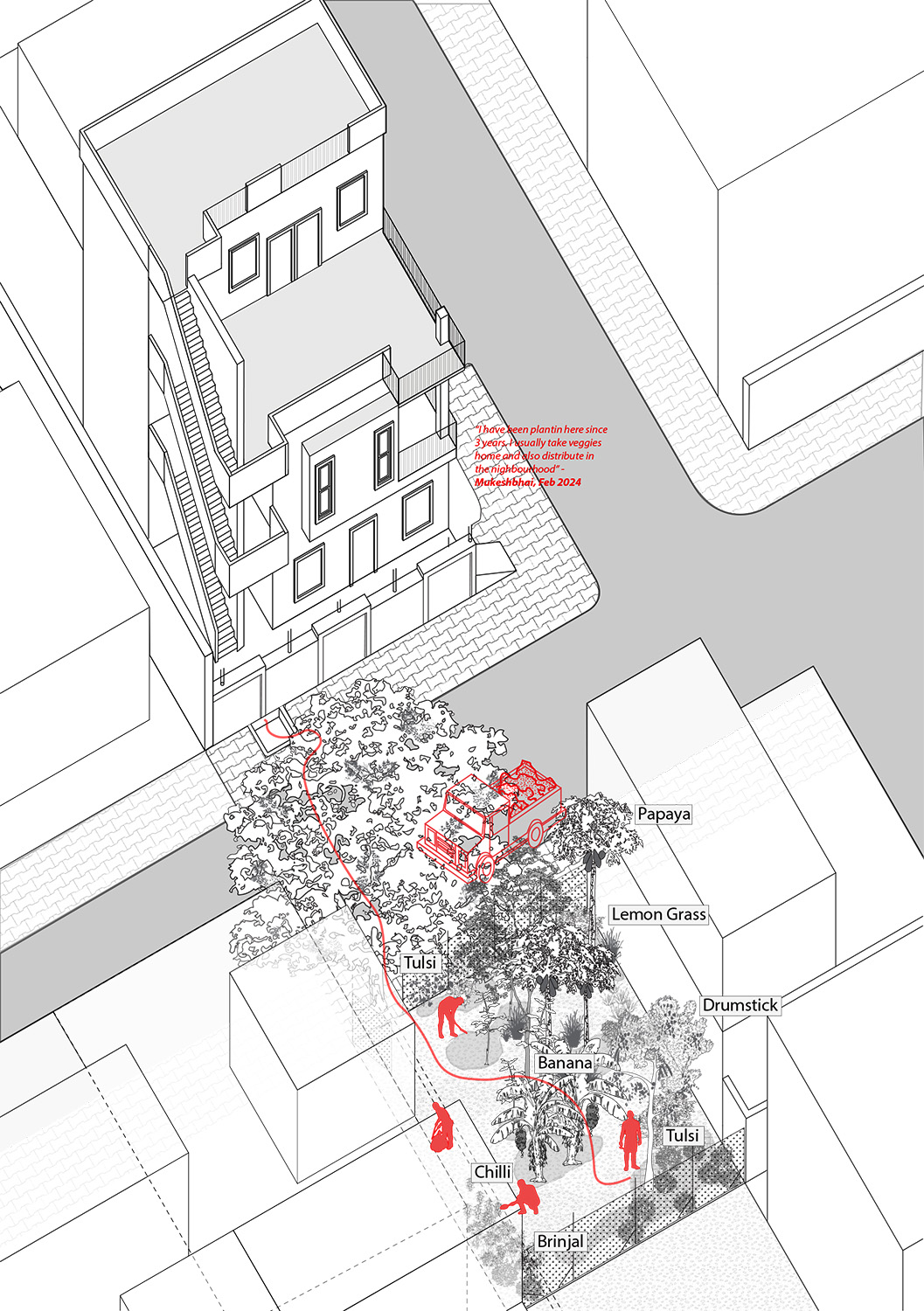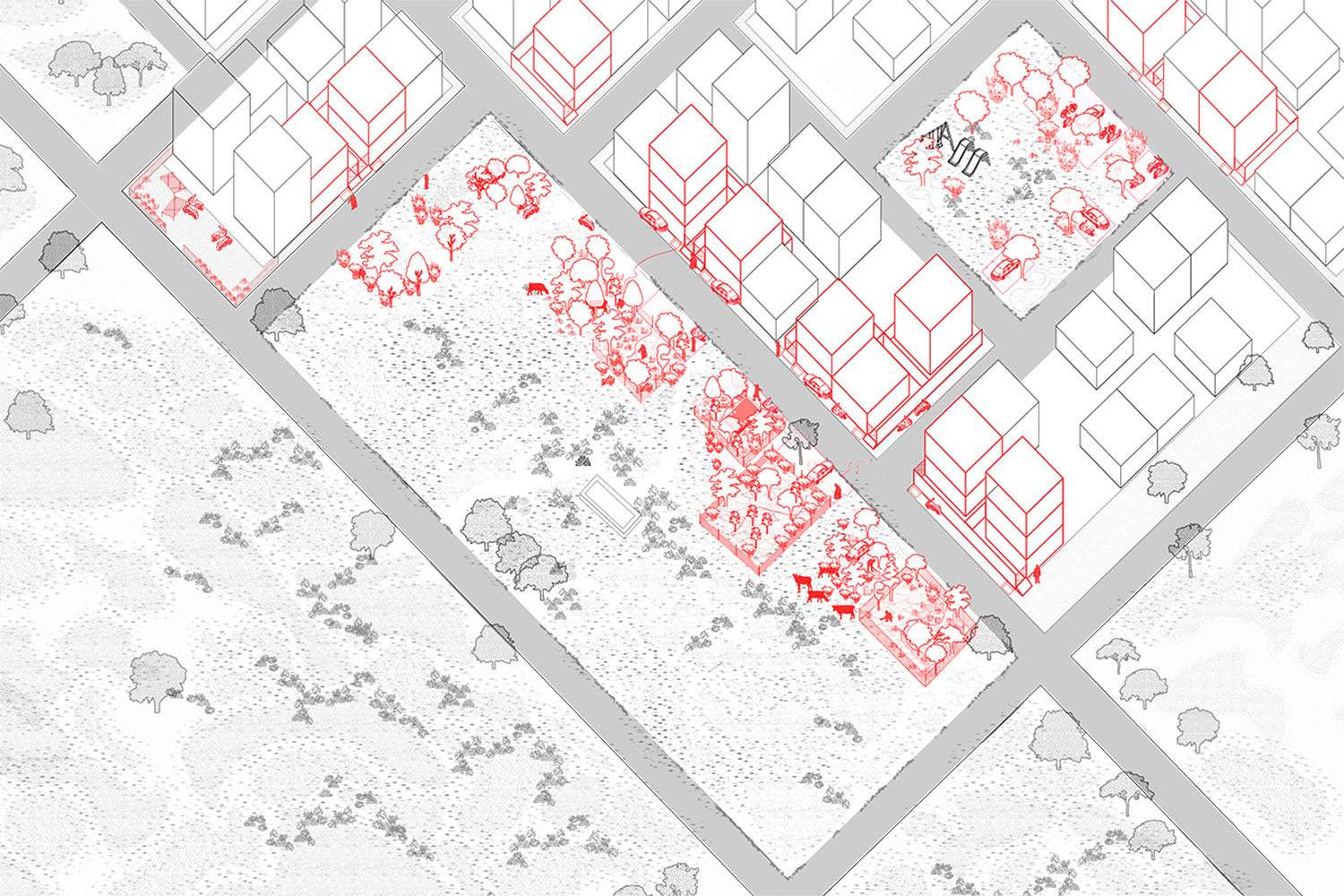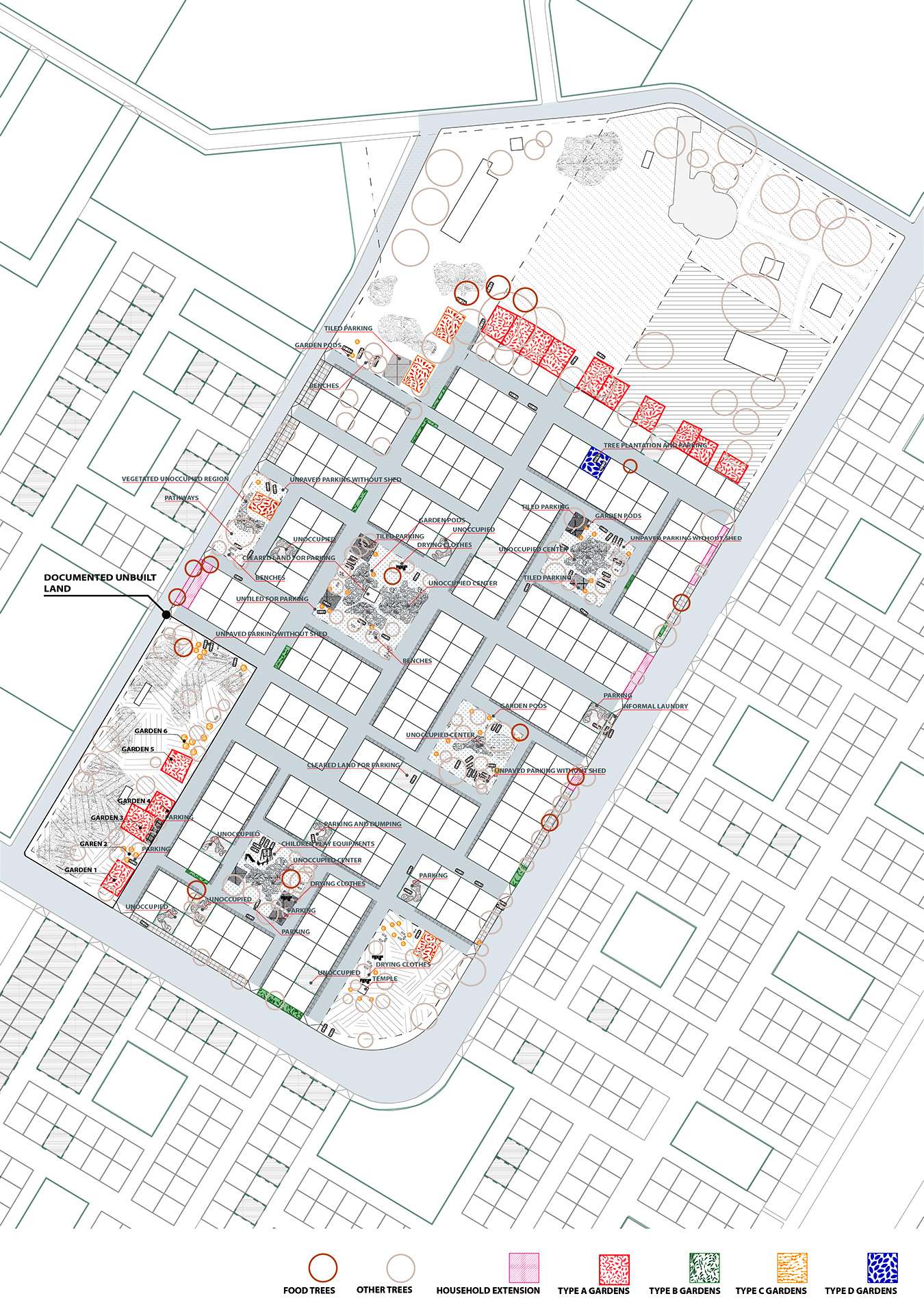About 3% of land in typical residential sectors is informally converted into semi-private gardens on public grounds. These gardens, usually around 100 square meters, are cultivated on fallow land earmarked for commercial, institutional, or other uses that remain undeveloped. Residents frequently use household resources to shape these landscapes, growing a variety of trees, shrubs, vegetables, and ground covers. These self-organized spaces not only provide direct benefits to residents but also enhance the local environment, increase biodiversity, and offer additional opportunities for social interaction. The transformation of these urban spaces highlights the potential of grassroots initiatives in shaping urban landscapes and fostering community resilience.
Urban Food Gardens: Decoding case of uderutilised public land
-
Tags
community gardening, urban agriculture, vacant land reclamation, grassroots land adaptation, Gandhinagar urban farming, informal land use, urban green spaces, community-led urban development, sustainable urban planning, urban biodiversity
Directed Research Project
Author: Shruti Jog
Guided by: Mansi Shah (as a part of on-going research)
Supported by: Lopamudra Baruah
Urban Food Gardens: Decoding Unique case of uderutilised public land
This research investigates the informal appropriation of vacant urban land in Gandhinagar, where residents cultivate gardens on underutilized plots. Arising from conditions of legal ambiguity, neglect, or transition, these spaces become sites of grassroots land adaptation. Through mapping and field interviews, the study explores how local communities engage in small-scale cultivation to assert agency, negotiate spatial belonging, and contribute to urban biodiversity. Framing these interventions as moments of decentralized decision-making, the research highlights their relevance in rethinking urban land use and participatory planning practices.

Mapping food gardens in Sector A, 2023.
In response to the varying types of vacant land, four distinct garden typologies have emerged:
Type A- gardens on large vacant lots, Type B- gardens on private vacant lots, Type C- garden on shared open space land, Type D- garden onto the ROW
A neighborhood is selected in Sector 4A. The vacant land in front of these houses is meant for tree plantation.The primary reason behind selection of this neighborhood is the richness of food trees in these gardens. There are six gardens in a row made in front of almost every house with differing sizes. Uniquely structured most of the gardens have gates and fence around. Following is the detailed documentation of two of these gardens.
Although gardening practices in Gandhinagar offer little direct economic return to residents, they fulfill important social and environmental functions. Residents invest both time and personal resources into the upkeep of these gardens, driven by a sense of stewardship rather than profit. The sharing of produce, knowledge, and gardening resources fosters a culture of mutual support, positioning these gardeners as benefactors within their neighborhoods. In doing so, they contribute meaningfully to key indicators of environmental and social sustainability. Viewed through the lens of neighborhood management, these informal gardeners could be seen as custodians—initiators of a circular, self-sustaining system that enhances community resilience and ecological health for as long as the gardens are maintained.
About Shruti Jog
She is an urban design graduate from CEPT University, Ahmedabad, with a strong interest in research, documentation, and critical analysis. She explores design through mapping, writing, and drawing, and is particularly passionate about sustainable design inquiry. In 2024–25, she worked at Banduksmith Studio while also working as a teaching associate at CEPT University for both a course and then a design studio.











